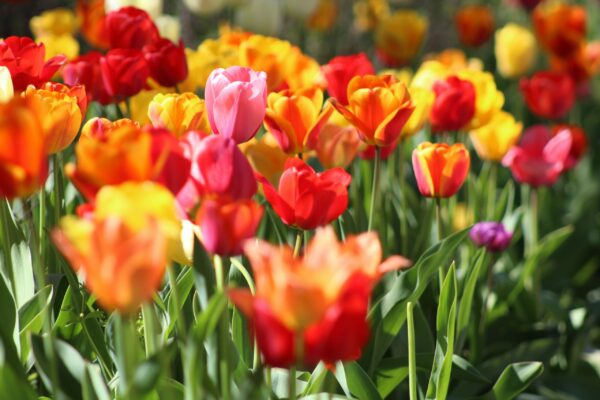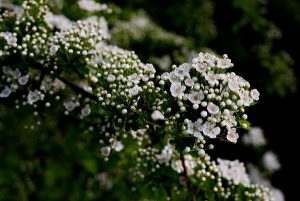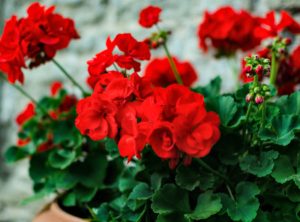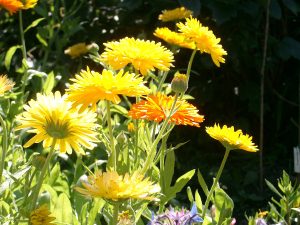The seasons are slowly changing here in the UK, and Sally Morgan from her blog Living on One Acre or Less, takes a closer look at one of our most popular garden flowers, and how climate change, and the chill (or lack of!) can affect tulips.
Tulips, chill and climate change
Tulip bulbs are back in the garden centres, heralding the time of year when we start trawling through the bulb catalogues and planning our colour combinations for spring. Of course, no bulb display is complete without the majestic tulip.
But there is one fly in the ointment looming large – climate change. Just this last year we’ve had a mild yet wet winter, the coldest March on record, a warm spring and then ultra high temperatures in July and a drought. None of it is good news for the tulip as you will discover.
We’re already getting a taste of what’s ahead. One of the world’s best known tulip gardens, Keukenhof in Holland, is already experiencing problems. They need their displays to be ready from March and in order to have the quality of displays expected by their visitors they are planting up to 30% more bulbs than usual. There are problems too in the US. The Tulip Time Festival in Michigan is hugely popular but over the last few decades the flowering times of the tulips have advanced by several weeks and now the festivals are having to bring their dates forward too.

Tulips need cold
Tulips and their relatives, the crocus and hyacinth, need a period of cold to stimulate flowering. Tulips are native to Central Asia and they are found growing in mountainous areas where winters are cold. The tulip’s development is triggered by temperature and if the winter is mild and wet, tulips simply do not perform well.
Let’s take a moment to think about the life cycle of the tulip. It takes several years for a tulip bulb to reach the flowering stage. A fat bulb ready for planting in ground consists of the mother bulb, daughter bulbs and the start of the granddaughter bulbs inside the daughter bulbs, a bit like a Russian doll. Planting is followed by root formation and then a period of ‘dormancy’ in which there are no external changes. The tulip needs a period of cold to stimulate growth of the stem and leaves and floral bud. Then in spring, the flower stem elongates and the flower bud appears. The mother bulb is used up after flowering and is replaced by a daughter bulb. Once the warm summer temperatures arrive, the leaves die back, the floral bud develops and the bulb enters dormancy again.
So, temperature is key is the life cycle of the tulip. It needs warmth in summer to start developing the floral bud and a period of cold to break dormancy and trigger the growth of the stem and flower in spring. But warm springs can be problematic too. If the spring temperatures are higher than average, the quality of the flowers the following year can be adversely affected. The bulbs will be at a more advanced stage when they are harvested and put into storage and this leads to the dehydration of the flower bud.
Chill in a fridge?
As temperatures increase and winters become milder, it will become more difficult to grow crocus, tulip and hyacinth because of the lack of chill factor, but they could be grown in a climate change garden if they are given 6 to 8 weeks of chill to trigger the flowering cycle. So perhaps we should be be popping our tulips in a fridge for a couple of months in autumn and early winter before planting them out or buying pre-chilled bulbs? I know that is something I will try with some of my bulbs this year, instead of leaving the bags of bulbs on the side awaiting planting.
So, what else can you do? One option is to plant tulips in shady places or move the pots into shady corners so they are less affected by unseasonally mild winter weather. Once the tulips have experienced some cold weather or when the ground temperature has fallen, mulch heavily to maintain the cool conditions. Another way forward may be to plant a range of bulbs with differing rates of maturation so there are better chances of some flowering.
Opt for variety
Once again, variety can pay off. There are many different varieties of tulips and some will be better suited to a warmer garden than others. Best suited are the Darwin hybrids that were developed by Lefeber in Holland and they produce a single, large flower on a long sturdy stem. These mid to late spring tulips flower for up to five years and are also good for naturalising. Another option is to choose late flowering varieties such as Queen of the Night, Menton, Dreamland, and Dordogne, but their flowering period may be shortened if early spring is dry and warm.

The modern bulb has been bred to deliver a great display in the first and second year, and then be replaced. But as conditions change, we may be better opting for species tulip, such as Tulipa clusiana and Tulipa tarda, that will naturalise and create a display that will last many years and multiply. Of course, being perennial, these naturalised bulbs have a chance to adapt to the changing climate.






